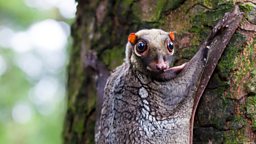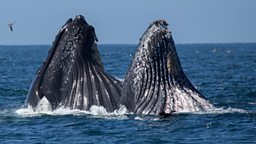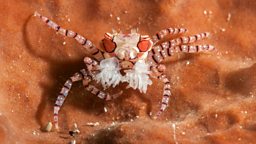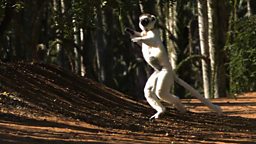Main content
Starling
How do they move together?
- Starlings reaction times to light stimuli has been tested at 76.38 milliseconds, whereas humans average 200-220 milliseconds
- There is no leader in a flock of starlings.
- New research has discovered that one starling can see areas of light and dark created by other birds within their flock, and they use this to maintain an ideal flock density. Each bird wants to be able to see some of the light sky through gaps in the flock as well as gather information from other birds.
So whilst dense swarms are thought to give an advantage against predation (as the predator would have difficulty distinguishing individual targets) each individual starling needs to be aware of the whereabouts of the predator, and can’t just rely on the information being passed to it from others in the flock.
When a predator (such as the peregrine falcon) attacks a flock, it is mostly birds on the border that get captured, so the birds compete with each other for a place in the centre of the flock.
More info on starlings:
- Starlings look black at a distance but when seen closer their plumage is iridescent black, glossed purple or green, and ‘starred’ with white, especially in winter.
- Up to 1,000,000 migrant starlings arrive in the UK in the autumn although we have a breeding population of about 1,600,000.
- In winter, Northeastern starling populations migrate south and most of the migrants in the UK are from Scandinavia, arriving for Britain's milder Atlantic climate.
- Peregrine falcons attack whole flocks during 90% of their hunts rather than lone flying starlings.
- Despite this, their success rate when hunting flocks is about one in four which is less successful then when hunting singletons.
- The most fruitful approach is the "surprise attack" where the falcon flies directly into the flock from a long distance out.






